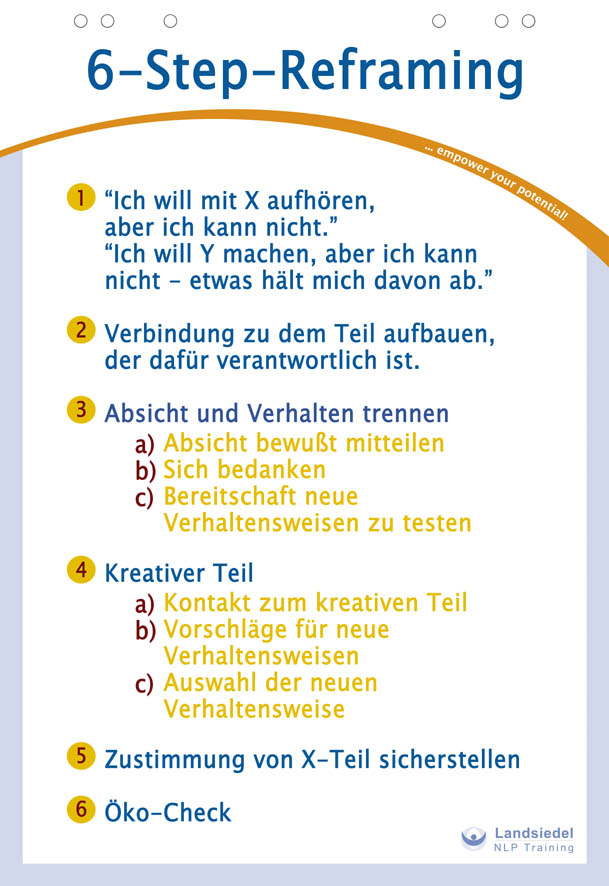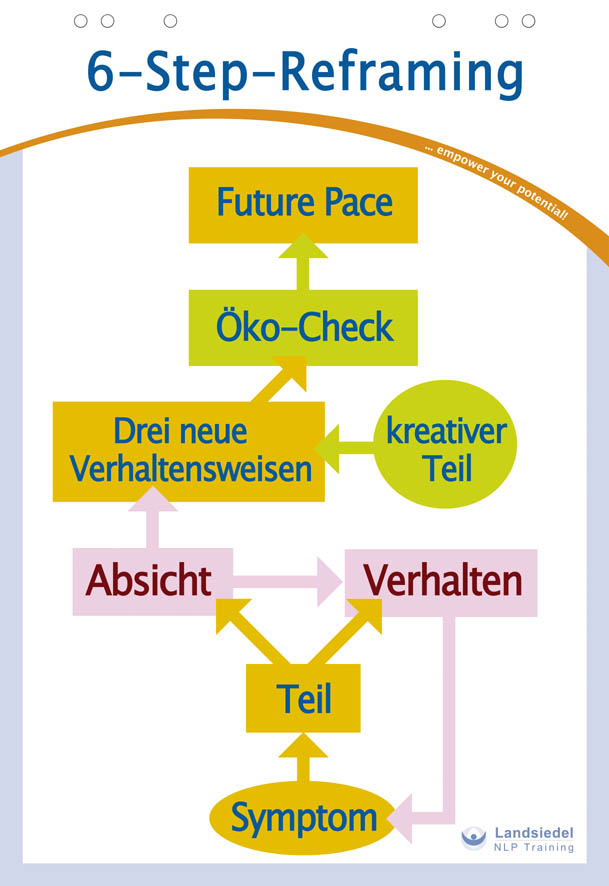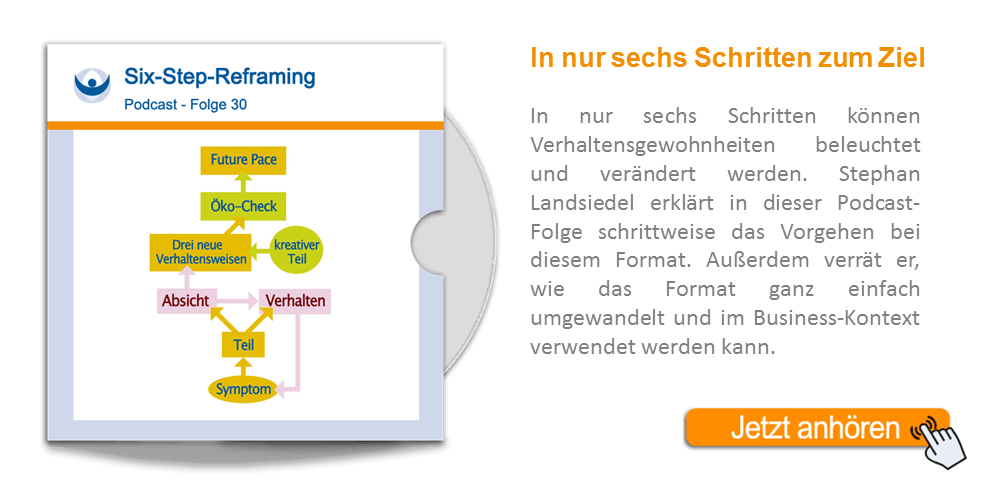Six-Step Reframing
Six-Step Reframing is one of the most well-known NLP intervention models. In six steps, behavioral habits can be explored and changed. Key components include separating intention from behavior, using the NLP Parts Model, and engaging the creative part to develop new behaviors.
It is particularly effective for psychosomatic symptoms, especially those that seem unconscious:
You might have no idea why a symptom exists. There is often constant shifting between conscious and unconscious states, between wakefulness and trance. Each symptom is associated with a “symptom-producing part.” The technique involves distinguishing between intention and behavior.
The Six Steps of Six-Step Reframing

- Identify the pattern (X) to be changed
Identify the pattern (X) that you want to change: “I want to stop doing X, but I can’t.” or “I want to do Y, but something holds me back.” - Establish communication with the responsible part
Establish communication with the part responsible for this pattern. Ask: “Will the part of me that causes me to do X communicate with me consciously?” Notice any feelings, images, sounds, or sensations that arise as an answer. Determine what signals mean “yes” and “no.” Allow clarity or intensity to increase for “yes” and decrease for “no.” - Separate behavior from positive intention
Separate the behavior (pattern X) from the positive intention of the part responsible for X. The unwanted behavior is only one way to achieve a positive purpose. Ask the part: “Would you be willing to let my conscious mind know what you are trying to do for me through X?” If you receive a “yes,” invite the part to share its intention. If you receive a “no,” continue with unconscious reframing while presupposing a positive intention. Once identified, check: “Is this intention acceptable to my conscious mind? Would you like to have a part that fulfills this function?” Then ask the part: “If there were ways to fulfill your positive purpose as well or better than X, would you be interested in trying them?” - Use the creative part to develop new behaviors
Access your creative part to develop new behaviors that serve the same positive purpose. Activate your sense of creativity or ask: “Am I aware that I have a creative part?” Let the part responsible for X communicate its positive function to the creative part, allowing the creative part to generate alternative ways to fulfill this purpose. Let the part that used to be responsible for X choose three alternatives that are at least as effective as X (or better), signaling “yes” each time an alternative is selected. - Ensure responsibility and bridge to the future
Ask the part: “Are you willing to take responsibility for using these three new alternatives in the appropriate context?” This ensures the transfer into the future. You can also ask the unconscious mind to identify the sensory cues that will trigger these new choices automatically, allowing the experience of how easily they will occur when those cues arise. - Ecological check
“Does any part of me object to the three new alternatives?”
If there’s a “yes,” return to Step 2.
- The practitioner ensures that there is no competition or power struggle between themselves and the part.
- The practitioner appreciates the part’s effort and allies with it if necessary, especially if the client criticizes it.
- The practitioner ensures that the part decides whether the process happens consciously or unconsciously.
- The practitioner pays careful attention to establishing clear and consistent communication with the part.


 Deutsch
Deutsch English
English Français
Français 中文
中文 Español
Español नहीं
नहीं Русский
Русский